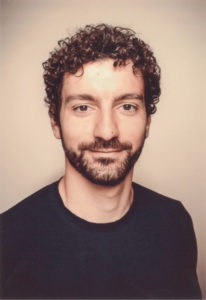 Dr. Marco Salvalaglio (Ph.D. in Materials Science, 2016, University of Milano-Bicocca) is a theoretical material scientist, working at the crossroads between solid-state physics, computational material science and applied mathematics. He is a Research Fellow at the Institute of Scientific Computing at the Mathematics Department of TU-Dresden, which he first joined as an Alexander von Humboldt Postdoctoral Fellow with an interdisciplinary project combining simulations and experiments for cutting-edge microelectronics applications in collaboration with the Leibnitz Institute IHP-Microelectronics (Frankfurt-Oder). In 2019 he has been appointed as Visiting Researcher at the Aalto University (Espoo, FI) and Junior Visiting fellow at the Hong Kong Institute for Advanced Studies (HK). His research focuses on the modeling and simulation of properties/evolution of crystalline materials by continuum and mesoscale models, mostly using continuum elasticity theory and phase-field methods. He studied mechanical properties of semiconductor structures and developed theoretical tools to study the plasticity onset in vertical nano- and microstructures, delivering a method to obtain dislocation-free 3D SiGe heterostructures ideally at any size, as eventually confirmed experimentally at the nano- and microscale. Moreover, he extensively worked on the modeling of the morphological evolution of crystalline structures to understand and control the evolution of complex three-dimensional nanostructures as those involved in heteroepitaxy and solid-state dewetting phenomena. His simulation results either helped to explain the experimentally observed phenomena or suggested specific experiments, enabling the control of surface diffusion and solid-state dewetting to obtain self-assembled nanostructures and on-chip silicon circuits. With his recent contributions, he also aims to bridge length scales to investigate extended defects, grain boundaries, and microstructures retaining atomistic details. To achieve this goal, he is developing computationally-efficient coarse-graining approaches based on the so-called phase-field crystal model. He published ~40 papers in peer-reviewed physics, materials science, mathematics journals, and he has been invited several times to present his results to international conferences (e.g., EMRS and SIAM meetings).
Dr. Marco Salvalaglio (Ph.D. in Materials Science, 2016, University of Milano-Bicocca) is a theoretical material scientist, working at the crossroads between solid-state physics, computational material science and applied mathematics. He is a Research Fellow at the Institute of Scientific Computing at the Mathematics Department of TU-Dresden, which he first joined as an Alexander von Humboldt Postdoctoral Fellow with an interdisciplinary project combining simulations and experiments for cutting-edge microelectronics applications in collaboration with the Leibnitz Institute IHP-Microelectronics (Frankfurt-Oder). In 2019 he has been appointed as Visiting Researcher at the Aalto University (Espoo, FI) and Junior Visiting fellow at the Hong Kong Institute for Advanced Studies (HK). His research focuses on the modeling and simulation of properties/evolution of crystalline materials by continuum and mesoscale models, mostly using continuum elasticity theory and phase-field methods. He studied mechanical properties of semiconductor structures and developed theoretical tools to study the plasticity onset in vertical nano- and microstructures, delivering a method to obtain dislocation-free 3D SiGe heterostructures ideally at any size, as eventually confirmed experimentally at the nano- and microscale. Moreover, he extensively worked on the modeling of the morphological evolution of crystalline structures to understand and control the evolution of complex three-dimensional nanostructures as those involved in heteroepitaxy and solid-state dewetting phenomena. His simulation results either helped to explain the experimentally observed phenomena or suggested specific experiments, enabling the control of surface diffusion and solid-state dewetting to obtain self-assembled nanostructures and on-chip silicon circuits. With his recent contributions, he also aims to bridge length scales to investigate extended defects, grain boundaries, and microstructures retaining atomistic details. To achieve this goal, he is developing computationally-efficient coarse-graining approaches based on the so-called phase-field crystal model. He published ~40 papers in peer-reviewed physics, materials science, mathematics journals, and he has been invited several times to present his results to international conferences (e.g., EMRS and SIAM meetings).
Welcome in DCMS, Marco!
Selected Publications:
- M. Bollani et al., Nature Communications 10, 5632 (2019)
- M. Salvalaglio et al., npj Computational Materials 5, 48 (2019)
- M. Naffouti et al., Science Advances 3, eaao1472 (2017)
- F. Isa et al., Advanced Materials 28, 884 (2016)
- M. Salvalaglio et al., Cryst. Growth Des. 15, 2787 (2015)



